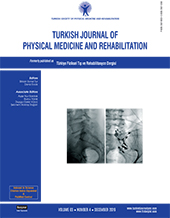The addition of self-lymphatic drainage to compression therapy instead of manual lymphatic drainage in the first phase of complex decongestive therapy for treatment of breast cancer-related lymphedema: A randomized-controlled, prospective study
Patients and methods: Between January 2015 and January 2017, a total of 24 patients (mean age 58.9±10.3 years; range, 42 to 83 years) with BCRL were randomly assigned to receive CB or CB plus SLD. The edema of the arm was assessed by volume calculation based on the circumference measurements. The Quick Disabilities of the Arm, Shoulder, and Hand Questionnaire (Q-DASH) for upper extremity functions, the Short Form-36 health survey (SF-36) for the quality of life, and the Hospital Anxiety-Depression Scale (HADS) for anxiety and depression were used. The patients were assessed before the treatment, at the end of the treatment, and six months after the treatment.
Results: A significant volume decrease was observed in the affected arm in both groups at the end of the treatment. Statistically significant improvements in the SF-36 and Q-DASH scores were observed in both groups; however, there was no significant change in the HADS-anxiety and depression subscale scores.
Conclusion: Our study results suggest that compression therapy with or without SLD is effective in the treatment of BCRL. However, the addition of SLD to CB in the first phase of CDT rather than MLD seems to provide no additional significant benefit.
Keywords : Breast cancer, compression bandage, self-lymphatic drainage, upper extremity lymphedema
















